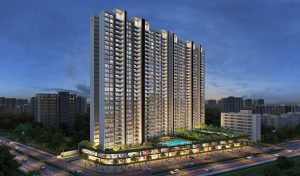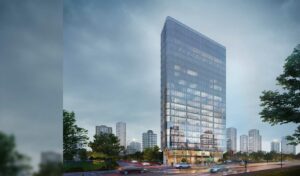Has remote work changed where and how we live forever? The answer is a resounding yes. As 2025 unfolds, the seismic shift towards flexible work models continues to profoundly reshape housing preferences, transforming our homes into integrated hubs for work, life, and leisure. This revolution isn’t just a trend; it’s redefining real estate from Pune to global cities, leading to a significant redistribution of population and a re-evaluation of what makes a house a home
Table of Contents
ToggleWhat is the Impact on Real Estate Markets Globally?
The evolution in housing preferences, propelled by remote work, is having profound and lasting effects on the real estate landscape across the globe.
Suburban and Exurban Growth:
Property values in suburban and newly accessible exurban areas with good connectivity and amenities are seeing significant appreciation. This redistribution of population is creating new development opportunities and revitalizing smaller towns and communities.
Reimagining Urban Spaces:
While some initially predicted the demise of urban centers, the reality is more nuanced. Cities are adapting, with commercial spaces increasingly being repurposed for residential use, fostering mixed-use developments that blend living, working, and retail. The focus is shifting towards creating highly livable, amenity-rich urban environments that cater to those who still prefer city life or a hybrid model with occasional office visits.
Demand for Specific Property Features:
Developers and homeowners looking to sell are actively highlighting features crucial to remote workers, such as integrated home office solutions, advanced smart home technology, robust security systems, and private outdoor spaces to attract the modern buyer.
Investment Shifts:
Investors are re-evaluating traditional real estate portfolios. There’s a growing focus on residential properties in high-demand suburban and exurban areas, coupled with a necessary re-assessment and innovation in the commercial office real estate sector to remain relevant. Office vacancy in the U.S. hit 19.9% in March 2025 (Aura Intelligence), indicating a significant challenge for traditional office landlords.
The Rise of “Workation” Destinations:
The newfound ability to work from home or work virtually anywhere is also fueling demand for secondary homes or long-term rental properties in scenic or vacation-oriented locations, further blurring the lines between professional and leisure life. This trend allows individuals to experience different environments while maintaining their careers.
What are the long-term implications of remote work on property values?
In the long term, remote work is likely to continue supporting property values in suburban and exurban areas, particularly those offering good connectivity, lifestyle amenities, and relative affordability. Urban property values will stabilize and adapt, with a greater emphasis on quality of life and mixed-use developments.
How is this affecting rent prices?
The impact of remote work on housing demand is also reflected in rental markets. Similar to home prices, areas seeing an influx of remote workers may experience increased rental demand and rising rents, as people seek larger, more comfortable living spaces suitable for working from home.
What are the benefits of living in the suburbs for remote workers?
Suburbs often provide more spacious homes, larger yards, better affordability compared to city centers, and a generally quieter environment. They also tend to have good school systems and a stronger sense of community, which are attractive to families.
Will offices become obsolete due to remote work?
No, offices are unlikely to become entirely obsolete. Instead, their purpose is evolving. They will transform into collaborative hubs for team meetings, innovation, client interactions, and social connection, rather than being places for daily, routine individual work. Flexible leases and attractive amenities will be key for commercial landlords.
What role does technology play in supporting remote work and housing trends?
Technology is fundamental. High-speed internet, collaboration tools (like Zoom, MS Teams, Slack), project management software (like Trello, Asana), and smart home devices (for lighting, climate control, security) are all critical enablers of effective remote work and enhance the livability of remote-friendly homes.
The Long-Term Outlook
The future of remote work is not a fleeting phenomenon but a fundamental evolution in how we approach employment and lifestyle. While the exact balance between fully remote, hybrid, and in-office work will continue to be refined, the core desire for flexibility and a better integration of work and life will persist.
This means housing preferences will continue to adapt significantly. Homes will increasingly be designed and chosen to support dual functions – living and working – emphasizing spaciousness, robust connectivity, and overall quality of life. The real estate market, both in India and globally, will see ongoing shifts, with new hotbeds of demand emerging in areas that can cater effectively to the needs of this evolving, geographically flexible workforce.
Ultimately, the future of housing is about empowerment. Remote work gives individuals unprecedented power to choose where and how they live, fostering a real estate market that is more diverse, dynamic, and responsive to personal preferences than ever before.










